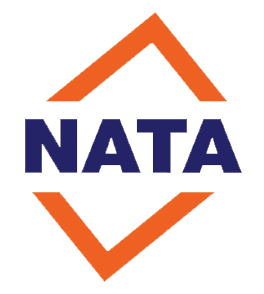








A good drug and alcohol policy will:
A drug and alcohol policy that has been developed collaboratively between employer and employees. It provides opportunities for constructive conversation and ensures buy-in among all levels of staff.
If a drug and alcohol incident occurred and an employer did not have a policy, it can be difficult to progress follow up actions. For an employee it can make it harder to understand their rights in the workplace and what support is available.
There are numerous Australian laboratories accredited to these standards for the laboratory testing of samples. ToxLogic, as a collection agency, is responsible for collecting the samples, and performing on-site tests if required. It is important for the validity of results that collection agencies are appropriately accredited.
NATA-accredited collection agencies and laboratories follow documented procedures that are externally validated and reviewed.
Samples are collected and tested under a chain of custody. This tracks the sample from start to finish to ensure the sample integrity is maintained throughout.
Samples of urine and oral fluid can either be tested on-site or collected and tested off-site at an accredited laboratory.
If the sample is tested on-site and the result is negative, the result of the test may be reported by the collector.
If the result of the on-site test indicates the sample requires further testing, the sample will be securely sealed and packaged, and sent to an accredited laboratory for confirmatory testing.
This can occur where the drug levels in the sample are very close to the cut-off levels of the device being used for testing. The devices used by ToxLogic require a visible line to develop on the device test panel for the sample to be reported as not detected for each drug group. If this line does not develop at all, or the collector is in doubt as to the presence of a distinct line, the sample will be reported as “requires further testing.” The sample is then sent to an accredited laboratory for analysis.
A false positive result is when a testing device has identified a drug group in the sample at a level above the specified cut-off. However, later confirmatory testing reports the result for that drug group as not detected.
This is most likely to occur with particular drug groups e.g. opiates, where a number of substances have a similar chemical structure. The screening device will recognise the combined value of all the substances belonging to the target drug group. In these cases, the sample would be reported by the collector as “requires further testing.” It would then be sent to an accredited laboratory for confirmatory testing.
Once the laboratory testing is completed, the final report will indicate which of the different substances was detected at levels above the confirmatory cut-off level. It is possible that none of the different substances will be present at levels above the cut-off level and the final report will be not detected. While the sample contained similar chemical substances that, when grouped together, were above the cut-off level, none of the individual substances were detected at a level above the confirmatory cut-off level.
If you have any further questions please feel free to contact us operations@toxlogic.com.au.